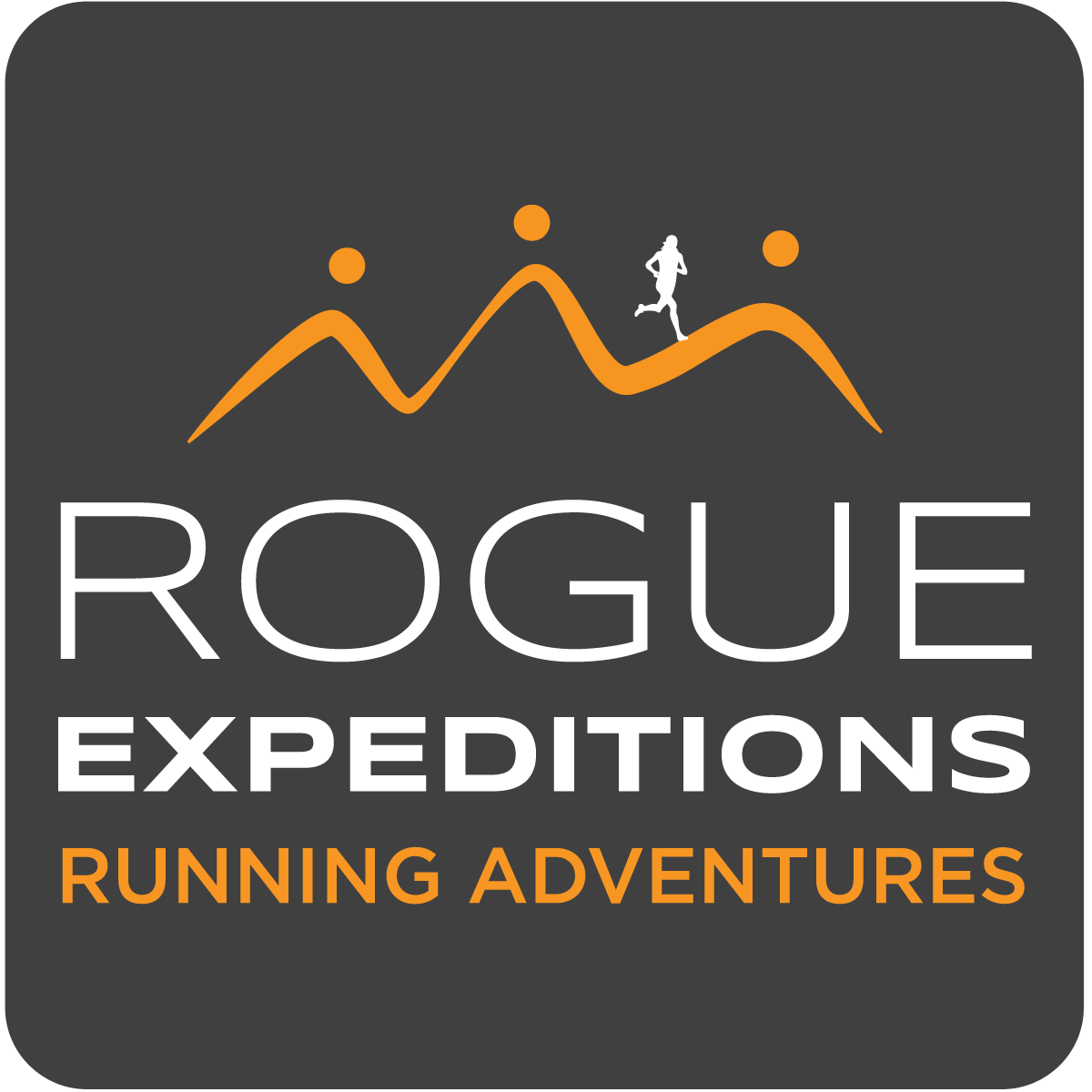What type of people go on Rogue Expeditions running trips? It seems that everyone worries that they'll either be too slow, or too fast. That the mileage will be too difficult, or not challenging enough. That they'll be too old, or too young. That the other people will be super serious running geeks who talk about nothing but training, or that the other people will all be there to take it reeeeeeally easy. That they'll be the only person who doesn't know anyone else.
In truth, there is no "type." The trips attract all sorts of backgrounds, all sorts of ability levels and all sorts of motivations for being there, and the beautiful thing is that it works for just about everyone! To prove it, we are highlighting a number of our runners using their own words. Read on to find out about the running background, pre-trip hesitations, favorite trip memories and most surprising realization of a Rogue Expeditions runner.
Deirdre McAuliffe is up next! Deirdre, who is Irish but currently living in Hampshire, UK, is one of the younger participants that we've had. Despite the fact that she is very new to running and to international travel, it turns out that she's a natural at both activities.
Which trip did you do and when?
Run Morocco: Mountains & Coast, March 2017
Describe your running background.
I ran a little in school at sports days and such. However, I fell out of the routine in teenage years and decided on a whim to enter a half marathon in 2014 - having done little to no training! On that very, very, very long and slow run, I decided that I quite liked the idea of running! I have since done a few half marathons in Ireland and UK and completed my first marathon in Dublin in 2016.
How did you end up on that trip? What led you to the decision?
After that first half marathon in Dingle, I saw an advertisement for Rogue Expeditions on the race's Facebook page. I promised myself that if I kept this running madness up, I would treat myself once I'd finished university!
Any hesitations or uncertainties going into it?
Lots! Until this trip, I had never traveled outside of Europe. I had also never traveled on my own. Like many others, I was worried about the mileage and also the terrain as I had never run on trails. I knew this was going to be a whole new experience but Allison was very informative from the initial stages so I felt as comfortable as possible about the trip.
Did you know anyone else in the group beforehand? How was it traveling with a group of strangers?
I didn't know anyone in the group beforehand but I was blown away by the kindness of everyone I met. From the airport welcome with a bottle of water to the parting hugs, I couldn't have met a nicer bunch of people. The cooks and drivers were fantastic! Always prepared with water and snacks, and the most elaborate picnics you could imagine.
What was your favorite run and why?
My favourite run has to be the run and hike up to the base camp of Mount Toubkal. It was my first experience of many things - trails, running in the snow and higher altitudes. It was also the most challenging but I always felt that I could plod along at my own pace and enjoy it.
Food is a huge part of any travel experience. What was your favorite thing that you ate?
It's got to be the Beef Kefta tagine served up hot by our wonderful team of cooks after that very long hike up Mount Toubkal. The food across the entire trip was outstanding - always fresh, always varied and catered for a very diverse group of very hungry runners without an issue.
Both travel and running have their ups and downs. What was your most challenging moment or issue during the trip? How did you overcome it?
Apart from my highest mileage week to date, there wasn't one!
What surprised you the most about the experience?
The hospitality for sure. From the drivers and cooks who knew us by name by the second day. To the staff in the places we stayed who met us with warm handshakes. To the remote villages where people's livelihoods are their goats, crops and the occasional cow. Everyone I met on this trip had a warm smile. They call out "Bonjour!" as you pass and the children wave and giggle. I even had a group of children follow me for 1.5 miles through a tiny village and onto our picnic.
"Runcation" vs a race: what do you think are some of the key similarities and differences? Or are they even comparable?
The races I've been to have the same sense of excitement beforehand. However, there's so much pressure to perform "on the day", worrying about baggage, food and organising where to meet family and friends afterwards. Those pressures are removed during this trip. You just need to get yourself to the airport and you're looked after by a fantastic crew from the moment you land, to the farewell at the airport. They are so good at what they do - Allison, James and Hamid really do a wonderful job and make it look effortless.
Sum up your Rogue Expeditions experience in one sentence:
Several times during the trip, I found myself standing somewhere utterly beautiful with my mouth half open in amazement, coming to terms with how lucky I am to have had a place on this trip.





